With a full lineup of non-optical sensors, TDK is now prepared to respond to any market need. Our goal is to contribute to resolving social issues and become the world's No. 1 provider of sensor solutions by creating sensor elements that offer higher sensitivity, higher accuracy, and lower power consumption; by developing compound sensors and integrating sensors with arithmetic elements and memory; and, with the addition of software, by increasing added value through sensor fusion.*
Combining multiple sensors with software to achieve advanced sensing functions.
TDK's Goals for Sensor Solutions
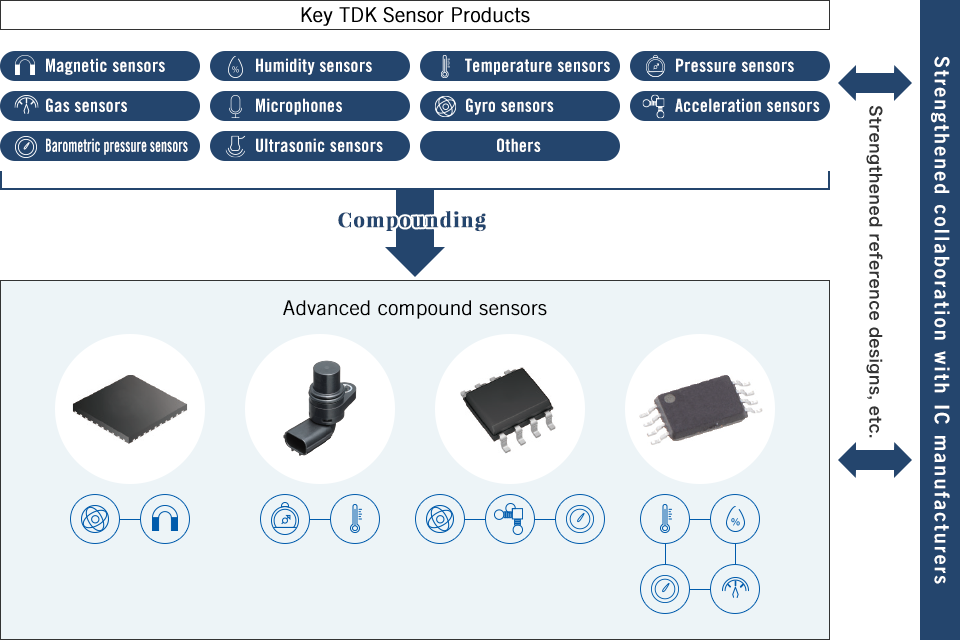
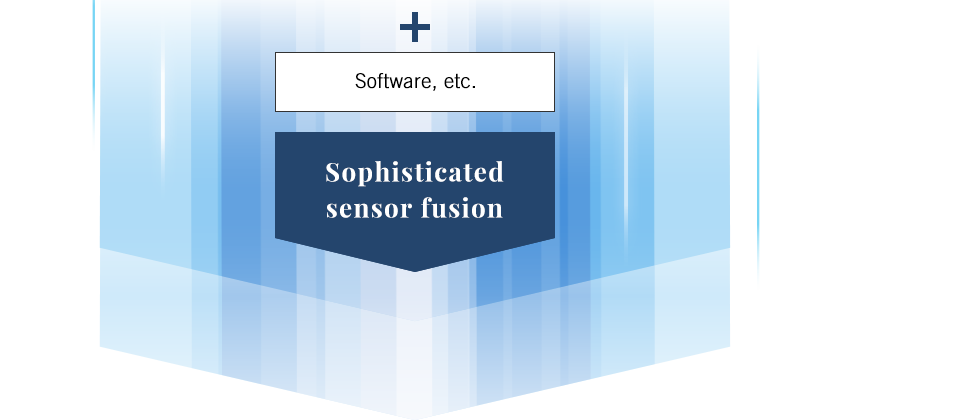
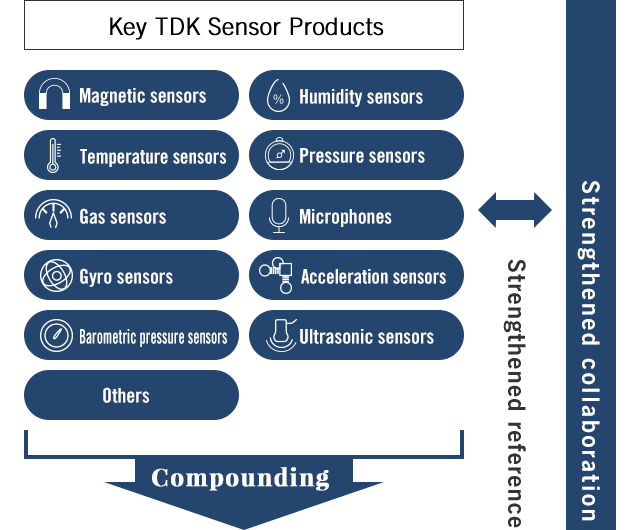

Examples of Compound Sensor and Software Application Solutions
- Gyro Sensors

- Software
Improved Workability and Efficiency
Gyro (angular velocity) sensors are used to detect the orientation and state of motion of a moving object. Familiar uses include car navigation systems, camera image stabilization, and more. Gyro sensors can be adapted for use in anything that moves. Used in combination with software in industrial and mobile robots, they contribute to improved workability and efficiency by enabling robots to create and learn new motions. Installed in wearable devices, they can detect a person's posture and movements, and may have applications in the sports and healthcare sectors.
- Ultrasonic Sensors

- Software
Improved Security
The use of biometric authentication systems involving passwords is expanding. One of these is a fingerprint authentication system with an ultrasonic sensor using MEMS technology. With excellent water resistance, it can read fingerprint and blood vessel patterns deep in the skin, eliminating the errors common with conventional methods. This makes high-performance fingerprint authentication systems possible, and contributes significantly to improved security. Depending on the software, ultrasonic sensors can be combined with wearable devices and used in near-field communications, offering a wide range of potential applications.
- TMR Sensors

- Hall Sensors
Improved Redundancy
Ultra-high-sensitivity TMR sensors, adapted from HDD head technology, and Hall sensors, a kind of sensor flexible enough to adapt to a diverse range of applications, are the two leading types of magnetic sensing technologies, and one of TDK's strengths is its lineup of magnetic sensor products. Angle sensors, rotation sensors, position sensors, and others each bring their distinctive characteristics to the automotive, robotics, and other fields. In addition, use of TMR sensors and Hall sensors together as a set enhances the likelihood that one or the other will maintain its sensor functions even in the harshest conditions, significantly improving redundancy.
- Acceleration Sensors

- Gyro Sensors
Improved Safety
Combining acceleration sensors with gyro sensors creates inertial sensors capable of detecting the attitude of a vehicle around three different axes: front and back, left and right, and up and down. The angular velocities around each of these axes are known as the roll rate, the pitch rate, and the yaw rate. During left and right turns, for example, the sensor detects angular velocity in terms of yaw rate, preventing drift, where the vehicle cannot turn, and spin, where the vehicle turns too far. This technology is also critical to ensuring the safety of autonomous-driving vehicles. Applications can also be expected for mobile robots.
- Acceleration Sensors

- Gyro Sensors

- Barometric Pressure Sensors

- Software
Improved Navigation Accuracy
Inertial sensors made up of acceleration sensors and gyro sensors can be combined with barometric pressure sensors to achieve highly accurate car navigation even on roads with height differences. Going forward, we will also see the development of software and systems that use AI to analyze and manage the information gathered by various automotive sensors, using it to inform the driver in the event of possible breakdowns or accidents. Automobile sensor networks, connected by the vehicle's engine control unit (ECU), will also connect to sensor networks in the IoT society to come.
Future Potential
Efforts are underway worldwide to utilize sensor networks as a means of improving the safety and economic efficiency of public infrastructure. The number of potential targets for sensing devices is innumerable, from railways and roads, to rivers, harbors, bridges, and steel towers. Because many of these involve dangerous working environments, sensor units equipped with internal batteries need to remain usable for long periods of time following installation. This is why the ability to offer highly durable, highly reliable sensor units will greatly enhance competitive advantage in the IoT market to come.

Sensor Business Integration and Rapid Launch
TDK integrated some divisions and related companies belonging to disparate business domains by fiscal 2017, including magnetic sensors, temperature and pressure sensors, MEMS and microphones, etc., and established Sensor Systems Business Company. With six Group companies in 13 locations worldwide engaged in marketing and R&D efforts across the Group, we are aiming toward a rapid launch of the sensor business (note the addition of “Sensor Application Products” in our segment reporting beginning in fiscal 2018).
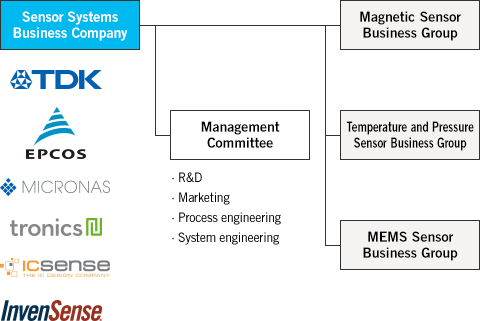
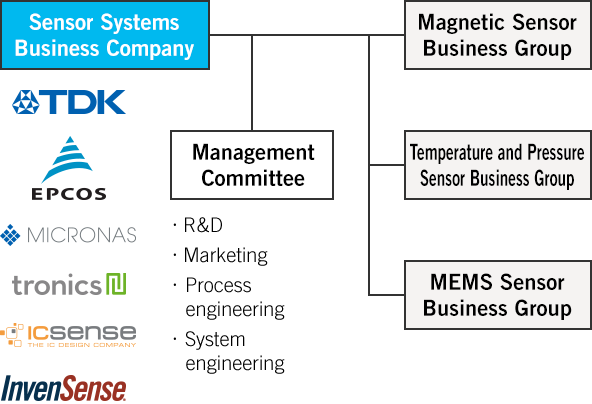
View the full text of “TDK's Future Strategy” on the PDF version.
TDK’s Future Strategy